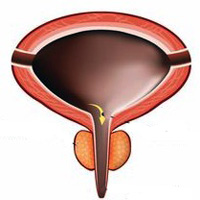Adjustable bulbourethral male sling: Experience after 30 cases of moderate to severe male stress urinary incontinence

Submitted: July 30, 2019
Accepted: September 21, 2019
Published: April 6, 2020
Accepted: September 21, 2019
Abstract Views: 1004
PDF: 580
Publisher's note
All claims expressed in this article are solely those of the authors and do not necessarily represent those of their affiliated organizations, or those of the publisher, the editors and the reviewers. Any product that may be evaluated in this article or claim that may be made by its manufacturer is not guaranteed or endorsed by the publisher.
All claims expressed in this article are solely those of the authors and do not necessarily represent those of their affiliated organizations, or those of the publisher, the editors and the reviewers. Any product that may be evaluated in this article or claim that may be made by its manufacturer is not guaranteed or endorsed by the publisher.

 https://doi.org/10.4081/aiua.2020.1.7
https://doi.org/10.4081/aiua.2020.1.7



